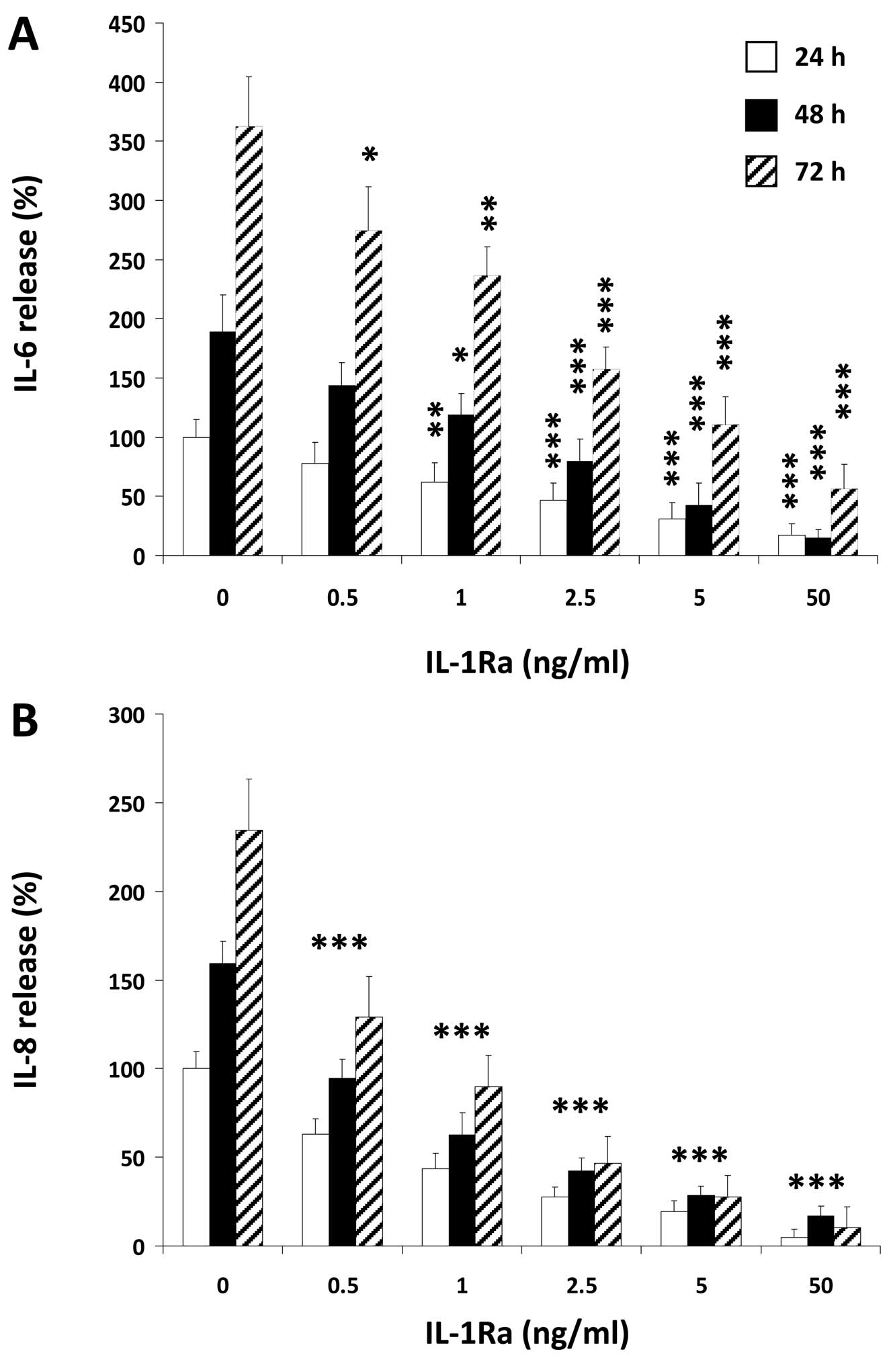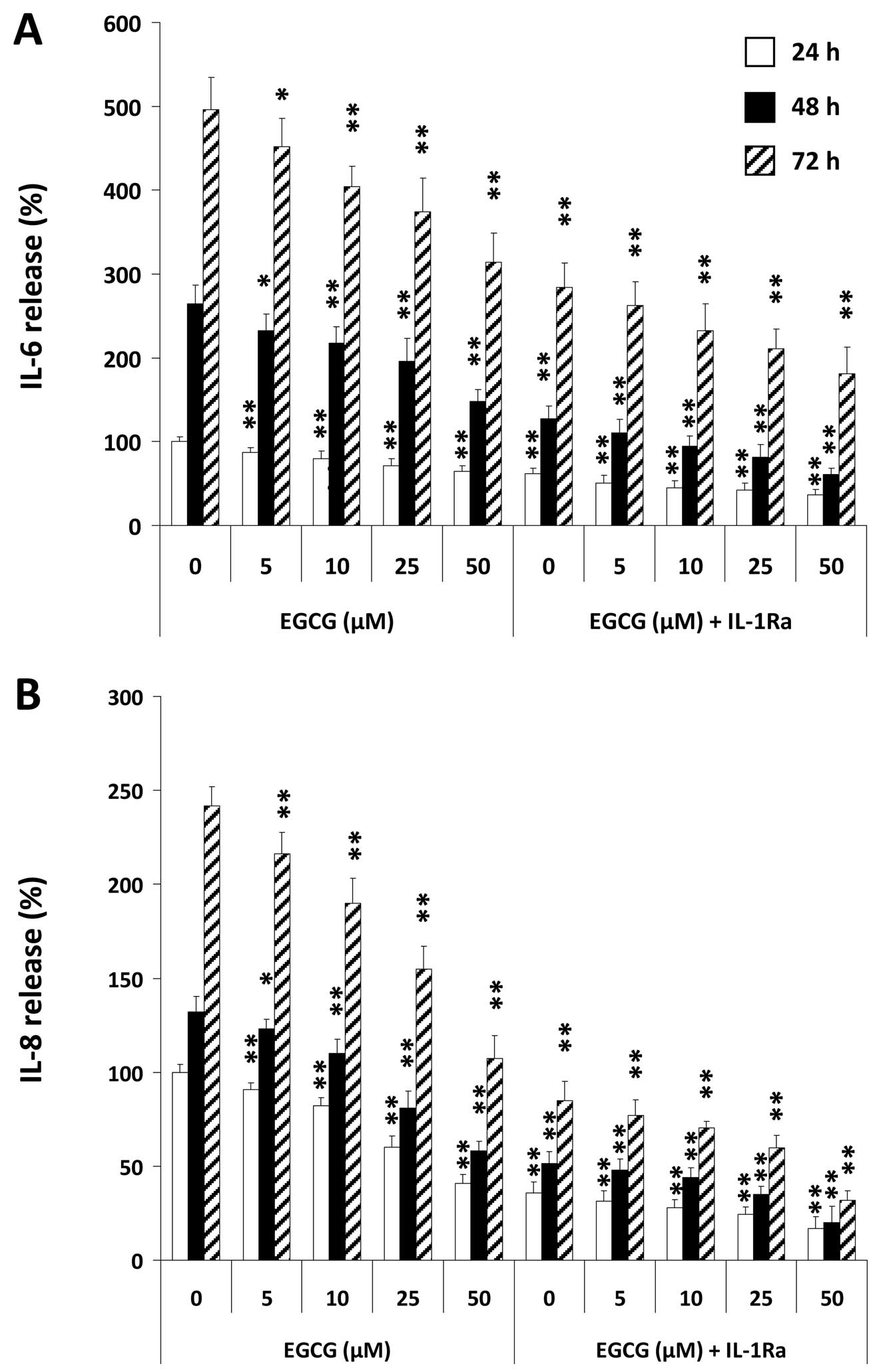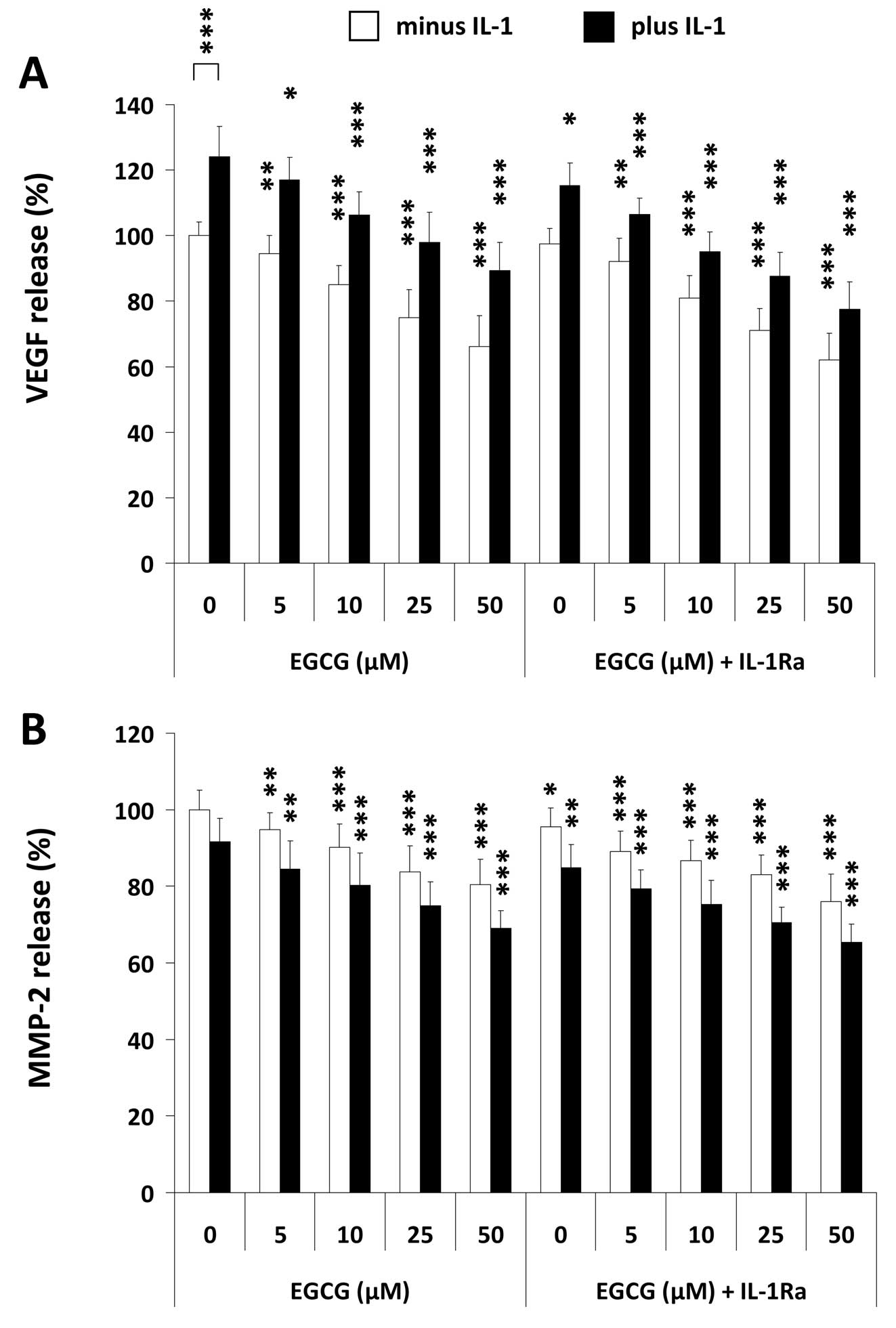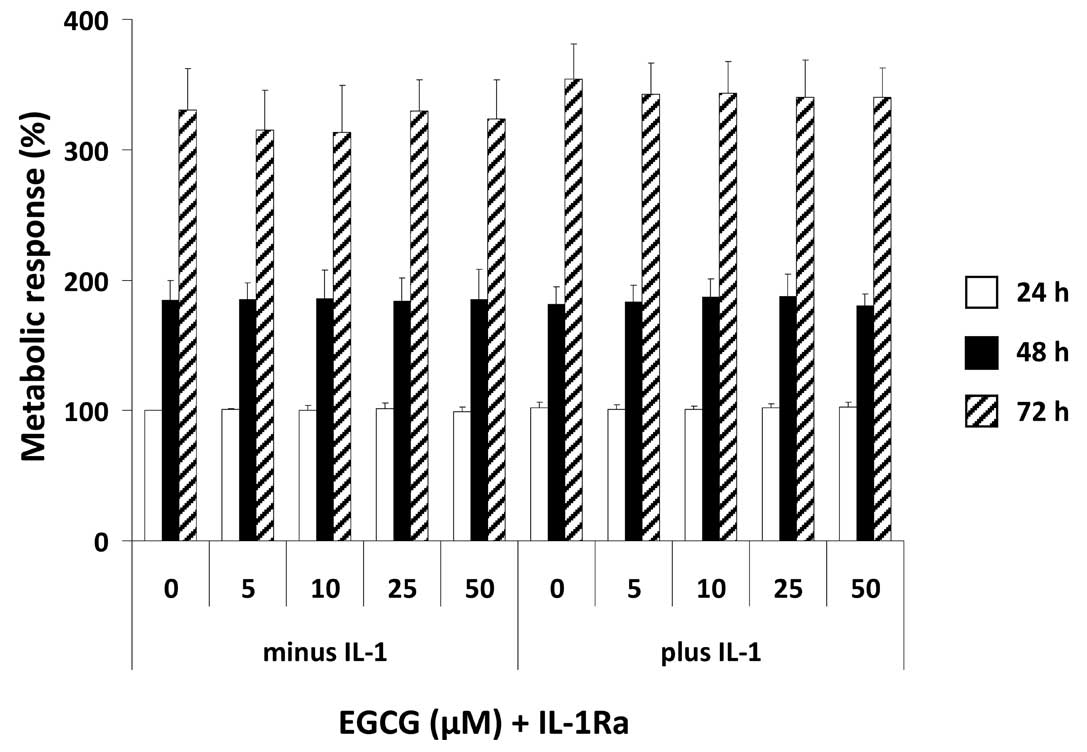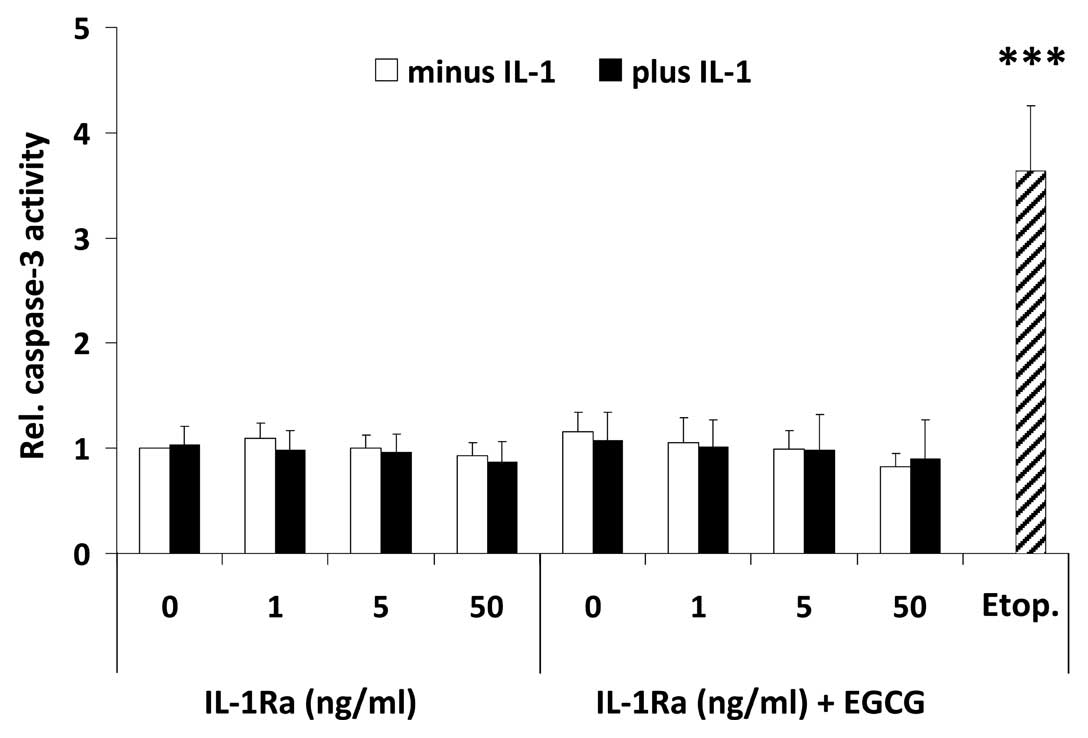|
1
|
Longhi A, Pasini A, Cicognani A, et al:
Height as a risk factor for osteosarcoma. J Pediatr Hematol Oncol.
27:314–318. 2005. View Article : Google Scholar : PubMed/NCBI
|
|
2
|
Vigorita VJ and Ghelman B: Orthopaedic
Pathology. 2nd edition. Lippincott, Williams and Wilkins;
Philadelphia, PA: 2008
|
|
3
|
Bielack SS, Kempf-Bielack B, Delling G, et
al: Prognostic factors in high-grade osteosarcoma of the
extremities or trunk: an analysis of 1,702 patients treated on
neoadjuvant cooperative osteosarcoma study group protocols. J Clin
Oncol. 20:776–790. 2002. View Article : Google Scholar
|
|
4
|
Hegyi M, Semsei AF, Jakab Z, et al: Good
prognosis of localized osteosarcoma in young patients treated with
limb-salvage surgery and chemotherapy. Pediatr Blood Cancer.
57:415–422. 2011. View Article : Google Scholar : PubMed/NCBI
|
|
5
|
Khan N, Afaq F and Mukhtar H: Cancer
chemoprevention through dietary antioxidants: progress and promise.
Antioxid Redox Signal. 10:475–510. 2008. View Article : Google Scholar : PubMed/NCBI
|
|
6
|
Shankar S, Ganapathy S, Hingorani SR and
Srivastava RK: EGCG inhibits growth, invasion, angiogenesis and
metastasis of pancreatic cancer. Front Biosci. 13:440–452. 2008.
View Article : Google Scholar : PubMed/NCBI
|
|
7
|
Yang CS, Lambert JD, Ju J, Lu G and Sang
S: Tea and cancer prevention: molecular mechanisms and human
relevance. Toxicol Appl Pharmacol. 224:265–273. 2007. View Article : Google Scholar : PubMed/NCBI
|
|
8
|
Khan N and Mukhtar H: Multitargeted
therapy of cancer by green tea polyphenols. Cancer Lett.
269:269–280. 2008. View Article : Google Scholar : PubMed/NCBI
|
|
9
|
Hussain SP and Harris CC: Inflammation and
cancer: an ancient link with novel potentials. Int J Cancer.
121:2373–2380. 2007. View Article : Google Scholar : PubMed/NCBI
|
|
10
|
Multhoff G, Molls M and Radons J: Chronic
inflammation in cancer development. Front Immunol. 2:982012.
View Article : Google Scholar
|
|
11
|
Terpos E and Dimopoulos MA: Interaction
between the skeletal and immune systems in cancer: mechanisms and
clinical implications. Cancer Immunol Immunother. 60:305–317. 2011.
View Article : Google Scholar : PubMed/NCBI
|
|
12
|
Mantovani A, Allavena P, Sica A and
Balkwill F: Cancer-related inflammation. Nature. 454:436–444. 2008.
View Article : Google Scholar
|
|
13
|
Smida J, Baumhoer D, Rosemann M, et al:
Genomic alterations and allelic imbalances are strong prognostic
predictors in osteosarcoma. Clin Cancer Res. 16:4256–4267. 2010.
View Article : Google Scholar : PubMed/NCBI
|
|
14
|
Ta HT, Dass CR, Choong PF and Dunstan DE:
Osteosarcoma treatment: state of the art. Cancer Metastasis Rev.
28:247–263. 2009. View Article : Google Scholar : PubMed/NCBI
|
|
15
|
Heinsohn S, Evermann U, Zur SU, Bielack S
and Kabisch H: Determination of the prognostic value of loss of
heterozygosity at the retinoblastoma gene in osteosarcoma. Int J
Oncol. 30:1205–1214. 2007.PubMed/NCBI
|
|
16
|
Longhi A, Benassi MS, Molendini L,
Macchiagodena M, Picci P and Bacci G: Osteosarcoma in blood
relatives. Oncol Rep. 8:131–136. 2001.PubMed/NCBI
|
|
17
|
Lin WW and Karin M: A cytokine-mediated
link between innate immunity, inflammation, and cancer. J Clin
Invest. 117:1175–1183. 2007. View
Article : Google Scholar : PubMed/NCBI
|
|
18
|
Voronov E, Carmi Y and Apte RN: Role of
IL-1-mediated inflammation in tumor angiogenesis. Adv Exp Med Biol.
601:265–270. 2007. View Article : Google Scholar : PubMed/NCBI
|
|
19
|
Baamonde A, Curto-Reyes V, Juarez L, Meana
A, Hidalgo A and Menendez L: Antihyperalgesic effects induced by
the IL-1 receptor antagonist anakinra and increased IL-1beta levels
in inflamed and osteosarcoma-bearing mice. Life Sci. 81:673–682.
2007. View Article : Google Scholar : PubMed/NCBI
|
|
20
|
Lewis AM, Varghese S, Xu H and Alexander
HR: Interleukin-1 and cancer progression: the emerging role of
interleukin-1 receptor antagonist as a novel therapeutic agent in
cancer treatment. J Transl Med. 4:482006. View Article : Google Scholar : PubMed/NCBI
|
|
21
|
Apte RN, Krelin Y, Song X, et al: Effects
of micro-environment-and malignant cell-derived interleukin-1 in
carcinogenesis, tumour invasiveness and tumour-host interactions.
Eur J Cancer. 42:751–759. 2006. View Article : Google Scholar : PubMed/NCBI
|
|
22
|
Rutkowski P, Kaminska J, Kowalska M, Ruka
W and Steffen J: Cytokine and cytokine receptor serum levels in
adult bone sarcoma patients: correlations with local tumor extent
and prognosis. J Surg Oncol. 84:151–159. 2003. View Article : Google Scholar : PubMed/NCBI
|
|
23
|
Gay NJ, Gangloff M and O’Neill LA: What
the Myddosome structure tells us about the initiation of innate
immunity. Trends Immunol. 32:104–109. 2011. View Article : Google Scholar : PubMed/NCBI
|
|
24
|
Watters TM, Kenny EF and O’Neill LA:
Structure, function and regulation of the Toll/IL-1 receptor
adaptor proteins. Immunol Cell Biol. 85:411–419. 2007. View Article : Google Scholar : PubMed/NCBI
|
|
25
|
Karin M: Nuclear factor-kappaB in cancer
development and progression. Nature. 441:431–436. 2006. View Article : Google Scholar : PubMed/NCBI
|
|
26
|
Singh S and Khar A: Biological effects of
curcumin and its role in cancer chemoprevention and therapy.
Anticancer Agents Med Chem. 6:259–270. 2006. View Article : Google Scholar : PubMed/NCBI
|
|
27
|
Ponten J and Saksela E: Two established in
vitro cell lines from human mesenchymal tumours. Int J Cancer.
2:434–447. 1967. View Article : Google Scholar : PubMed/NCBI
|
|
28
|
Mosmann T: Rapid colorimetric assay for
cellular growth and survival: application to proliferation and
cytotoxicity assays. J Immunol Methods. 65:55–63. 1983. View Article : Google Scholar : PubMed/NCBI
|
|
29
|
Bradford MM: A rapid and sensitive method
for the quantitation of microgram quantities of protein utilizing
the principle of protein-dye binding. Anal Biochem. 72:248–254.
1976. View Article : Google Scholar : PubMed/NCBI
|
|
30
|
Qu Y, Xu J, Jiang T, et al: Difference in
pre- and postchemotherapy vascular endothelial growth factor levels
as a prognostic indicator in osteosarcoma. J Int Med Res.
39:1474–1482. 2011. View Article : Google Scholar : PubMed/NCBI
|
|
31
|
Korpi JT, Hagstrom J, Lehtonen N, et al:
Expression of matrix metalloproteinases-2, -8, -13, -26, and tissue
inhibitors of metalloproteinase-1 in human osteosarcoma. Surg
Oncol. 20:e18–e22. 2011. View Article : Google Scholar : PubMed/NCBI
|
|
32
|
Xie TX, Wei D, Liu M, et al: Stat3
activation regulates the expression of matrix metalloproteinase-2
and tumor invasion and metastasis. Oncogene. 23:3550–3560. 2004.
View Article : Google Scholar : PubMed/NCBI
|
|
33
|
Landers JE, Cassel SL and George DL:
Translational enhancement of mdm2 oncogene expression in human
tumor cells containing a stabilized wild-type p53 protein. Cancer
Res. 57:3562–3568. 1997.PubMed/NCBI
|
|
34
|
Ladanyi M, Cha C, Lewis R, Jhanwar SC,
Huvos AG and Healey JH: MDM2 gene amplification in metastatic
osteosarcoma. Cancer Res. 53:16–18. 1993.PubMed/NCBI
|
|
35
|
Hoffmann J, Junker H, Schmieder A, et al:
EGCG downregulates IL-1RI expression and suppresses IL-1-induced
tumorigenic factors in human pancreatic adenocarcinoma cells.
Biochem Pharmacol. 82:1153–1162. 2011. View Article : Google Scholar : PubMed/NCBI
|
|
36
|
Lambert JD and Yang CS: Mechanisms of
cancer prevention by tea constituents. J Nutr. 133:S3262–S3267.
2003.PubMed/NCBI
|
|
37
|
Lin JK, Liang YC and Lin-Shiau SY: Cancer
chemoprevention by tea polyphenols through mitotic signal
transduction blockade. Biochem Pharmacol. 58:911–915. 1999.
View Article : Google Scholar : PubMed/NCBI
|
|
38
|
Pisters KM, Newman RA, Coldman B, et al:
Phase I trial of oral green tea extract in adult patients with
solid tumors. J Clin Oncol. 19:1830–1838. 2001.PubMed/NCBI
|
|
39
|
Van Amelsvoort JM, Van Hof KH, Mathot JN,
Mulder TP, Wiersma A and Tijburg LB: Plasma concentrations of
individual tea catechins after a single oral dose in humans.
Xenobiotica. 31:891–901. 2001.PubMed/NCBI
|
|
40
|
Chow HH, Hakim IA, Vining DR, et al:
Effects of dosing condition on the oral bioavailability of green
tea catechins after single-dose administration of Polyphenon E in
healthy individuals. Clin Cancer Res. 11:4627–4633. 2005.
View Article : Google Scholar : PubMed/NCBI
|
|
41
|
Dinarello CA: Biologic basis for
interleukin-1 in disease. Blood. 87:2095–2147. 1996.PubMed/NCBI
|
|
42
|
Hedrich CM, Bruck N, Fiebig B and Gahr M:
Anakinra: A safe and effective first-line treatment in systemic
onset juvenile idiopathic arthritis (SoJIA). Rheumatol Int. Nov
15–2011.(Epub ahead of print).
|
|
43
|
El-Osta H, Janku F and Kurzrock R:
Successful treatment of Castleman’s disease with interleukin-1
receptor antagonist (Anakinra). Mol Cancer Ther. 9:1485–1488.
2010.
|
|
44
|
Lust JA, Lacy MQ, Zeldenrust SR, et al:
Induction of a chronic disease state in patients with smoldering or
indolent multiple myeloma by targeting interleukin 1β-induced
interleukin 6 production and the myeloma proliferative component.
Mayo Clin Proc. 84:114–122. 2009.
|
|
45
|
Hoffman HM, Throne ML, Amar NJ, et al:
Efficacy and safety of rilonacept (interleukin-1 Trap) in patients
with cryopyrin-associated periodic syndromes: results from two
sequential placebo-controlled studies. Arthritis Rheum.
58:2443–2452. 2008. View Article : Google Scholar
|
|
46
|
Lachmann HJ, Kone-Paut I,
Kuemmerle-Deschner JB, et al: Use of canakinumab in the
cryopyrin-associated periodic syndrome. N Engl J Med.
360:2416–2425. 2009. View Article : Google Scholar : PubMed/NCBI
|
|
47
|
Dinarello CA: Why not treat human cancer
with interleukin-1 blockade? Cancer Metastasis Rev. 29:317–329.
2010. View Article : Google Scholar : PubMed/NCBI
|
|
48
|
Meyers PA: Muramyl tripeptide
(mifamurtide) for the treatment of osteosarcoma. Expert Rev
Anticancer Ther. 9:1035–1049. 2009. View Article : Google Scholar : PubMed/NCBI
|
|
49
|
Mifamurtide: osteosarcoma: ineffective and
harmful. Prescrire Int. 20:892011.
|
|
50
|
Kleinerman ES, Jia SF, Griffin J, Seibel
NL, Benjamin RS and Jaffe N: Phase II study of liposomal muramyl
tripeptide in osteosarcoma: the cytokine cascade and monocyte
activation following administration. J Clin Oncol. 10:1310–1316.
1992.PubMed/NCBI
|
|
51
|
Ando K, Mori K, Corradini N, Redini F and
Heymann D: Mifamurtide for the treatment of nonmetastatic
osteosarcoma. Expert Opin Pharmacother. 12:285–292. 2011.
View Article : Google Scholar : PubMed/NCBI
|















